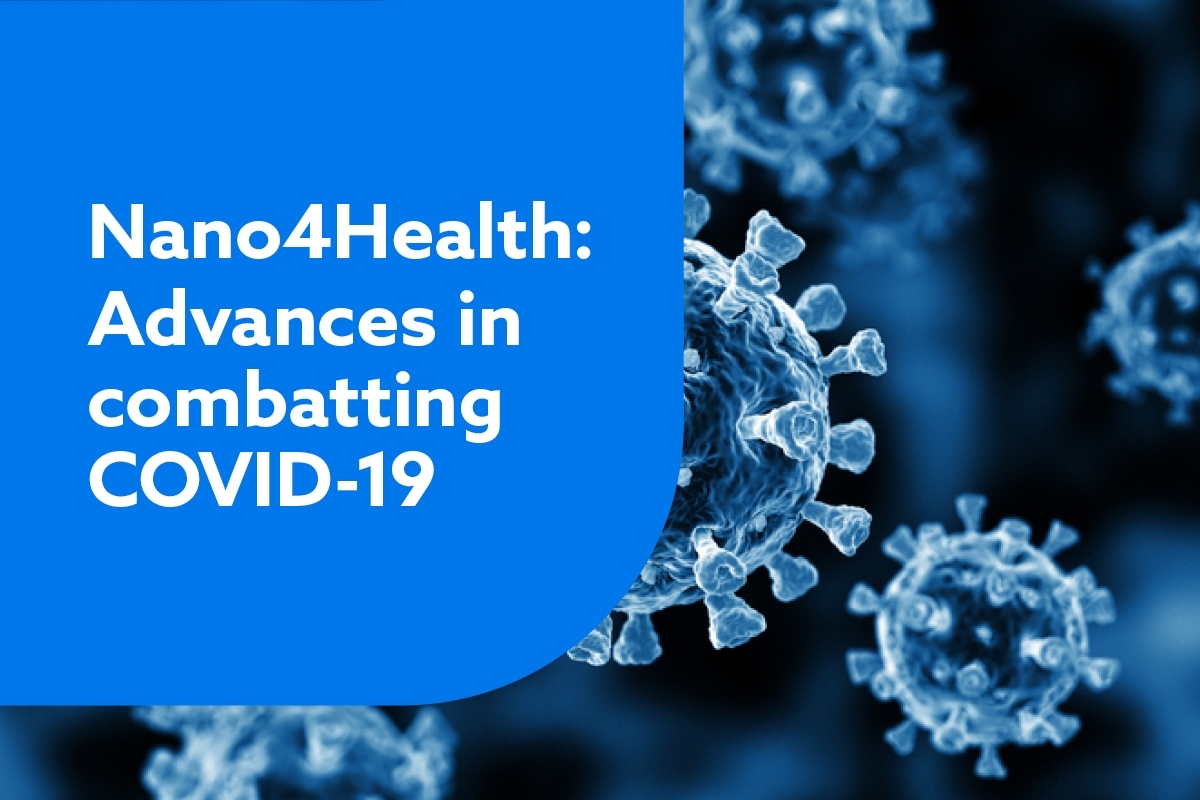Nano4Health: Advances in combatting COVID-19

Presentations include:
Toward nanotechnology-enabled approaches against the COVID-19 pandemic
Speaker: Cecilia Mattevi
The COVID-19 outbreak has initiated global efforts for effective diagnosis, treatment and prevention of the spread of infections. Nanotechnology can offer a number of approaches to cope with this emergency. Here, I will discuss how nanotechnology-based strategies can support the fight against COVID-19, as well as infectious diseases in general, to enable diagnosis, treatment and prevention.
2D materials in the fight against viruses
Speakers: Dr Stephen Hodge and Dr Thanuja Galhena (Versarien plc.)
Graphene and related 2d materials have attracted a great attention in a wide variety of biosensing technologies and in diverse healthcare applications due to their exceptional, and often tunable, electrical, optical, electrochemical, and physical properties. Here we highlight the major contributions that 2d materials can bring in managing a virus outbreak with four areas of focus: detection, protection, medication, surveillance. Strengthening this research front, will enable us to face the current pandemic and develop plans and directives that can be rapidly and effectively implemented in case of a future outbreak. We will also be discussing how Versarien Plc (AIM: VRS) an international leader in the field of graphene and related layered materials (GRMs) production and commercialisation, has been making its contribution towards these developments.
Destroy on contact (virucidal) antiviral materials
Speaker: Dr. Samuel Jones (University of Manchester)
Current response options for viral outbreaks leave us vulnerable to the catastrophic impacts of future pandemics. Virus specific vaccines, antibodies and drugs, which are being developed for current epi- and pandemics, provide no protection against future viral outbreaks. Additionally, each takes too long to implement, allowing diseases to spread.Recent work has shown that highly sulfonated nanomaterials act in such a broad-spectrum antiviral manner due to multivalent interactions. This led to us producing nonmaterial-based and the first ever fully-organic (sugar based) broad-spectrum virucidal antivirals. Most recently we have produced synthetic polymer-based materials that also show broad-spectrum antiviral properties. These materials work via a newly proposed disruptive binding approach that effectively 'pops' the viral capsids. Evidence is provided by electron microscopy, molecular dynamic simulations and in-vitro, ex-vivo and in-vivo assays.
Nanomaterials as antiviral surfaces and pathogen detection via plasmonic nanostructures’
Speaker: Professor Alistair Kean
Disease can be spread via droplets in the air, or contaminated surfaces. We will briefly explain our existing work on creating nanosurfaces which are antimicrobial and antiviral. The surfaces we have created are also inorganic and ultrahard. Using our knowledge of plasmonic nanosurfaces we are building photonic sensors which can detect molecules at sub-ppb levels in real time by surface enhanced Raman spectroscopy. We will show some examples of this technique.
Fluorescent nanodiamonds for rapid, sensitive, low-cost diagnostics
Speaker: Ben Miller, (UCL - McKendry group)
The ongoing COVID-19 pandemic has emphasised the need for sensitive, early diagnosis of infectious diseases, crucial for reducing the impact of outbreaks. Nanoparticle-based rapid diagnostics, such as lateral flow tests, are widely used for antibody detection but often lack the sensitivity required for early detection of antigen or nucleic acid targets. Fluorescent labels have been investigated as a replacement for gold nanoparticles, which are widely used on lateral flow tests, but their sensitivity is limited by the background autofluorescence of the membrane or sample. This presentation discusses recently published work from our lab incorporating fluorescent nanodiamonds into lateral flow tests with the aim of improving sensitivity. In addition to their attractive properties for in vitro biosensing, including brightness and low cost, fluorescent nanodiamonds allow for selective manipulation of their emission with an external electromagnetic field. This allows their emission to be specifically modulated at a fixed frequency and separated from background autofluorescence in the frequency domain. Although significant challenges remain in translating this proof-of-concept to a field-ready diagnostic, this work demonstrates the additional sensitivity nanodiamonds could offer in numerous diagnostic test formats, assays and diseases, with the potential to improve early diagnosis of diseases, benefiting patients and populations.
Miller, B.S., Bezinge, L., Gliddon, H.D. et al. Spin-enhanced nanodiamond biosensing for ultrasensitive diagnostics. Nature 587, 588–593 (2020). https://doi.org/10.1038/s41586-020-2917-1
Nanotechnology for Covid-19 vaccine delivery systems
Speaker: Professor Jeremy Ramsden (University of Buckingham)
Even before Covid-19, nano-objects were attracting attention in the development of new vaccines—the objects serving as a protective carrier for the antigen and as an adjuvant. The complexity achievable through modifications to nanoparticle–antigen conjugates make them medical devices rather than simple pharmaceuticals. Among the >100 vaccine candidates for COVID-19 being developed, about a dozen are nano-based vaccines. The recently approved BioNtech/Pfizer and Moderna vaccines against Covid-19 belong to a new class of RNA-based vaccines that deliver the genetic sequence of specific viral proteins to the host cells using nanotechnology platforms. RNA delivery should make the vaccine safer than traditional ones because mRNA is not infectious and cannot be integrated into the host genome. In these new vaccines the delivery vehicle could be lipid nanoparticles (liposomes) modified with polyethylene glycol (PEG) or inorganic materials such as titanium nanoparticles likewise modified. Naturally these raise issues of brain toxicity, which will also be discussed.















